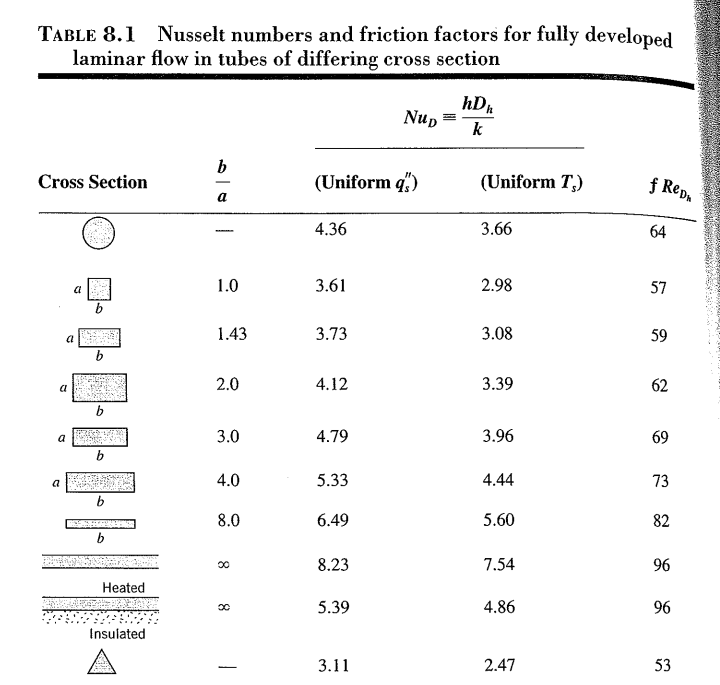Guys:
I'm probably showing my age, but I have this book:
Steinberg, Dave S., Cooling Techniques for Electronic Equipment 2nd Ed.; John Wiley & Sons, Inc., 1991.
Any of you out there have ANY OTHER edition of this book?
In my edition his equation for the hydraulic diameter D of a W X L horizontal rectangular surfaces is D=0.5LW/(L+W). What does your edition say?
For years in my career I used this formula in spreadsheet calculations. The natural convection coefficient for that surface is inversely proportional to the fourth root of the hydraulic diameter.
I looked many other places and found that it SHOULD read D=2LW/(L+W) which is four times bigger. So I have been UNDERESTIMATING the natural convection coefficients by a factor of (4)^(-0.25) = .707 for years in my spreadsheet calculations? Do you agree?
I actually used the definition of hydraulic diameter to prove the correction:
D=4X(cross-sectional area)/(wetted perimeter)=4(LW)/[2L+2W]=2LW/(L+W).
H. Bruce Jackson
ElectroMechanical Product Development
UMD 1984
UCF 1993
I'm probably showing my age, but I have this book:
Steinberg, Dave S., Cooling Techniques for Electronic Equipment 2nd Ed.; John Wiley & Sons, Inc., 1991.
Any of you out there have ANY OTHER edition of this book?
In my edition his equation for the hydraulic diameter D of a W X L horizontal rectangular surfaces is D=0.5LW/(L+W). What does your edition say?
For years in my career I used this formula in spreadsheet calculations. The natural convection coefficient for that surface is inversely proportional to the fourth root of the hydraulic diameter.
I looked many other places and found that it SHOULD read D=2LW/(L+W) which is four times bigger. So I have been UNDERESTIMATING the natural convection coefficients by a factor of (4)^(-0.25) = .707 for years in my spreadsheet calculations? Do you agree?
I actually used the definition of hydraulic diameter to prove the correction:
D=4X(cross-sectional area)/(wetted perimeter)=4(LW)/[2L+2W]=2LW/(L+W).
H. Bruce Jackson
ElectroMechanical Product Development
UMD 1984
UCF 1993

